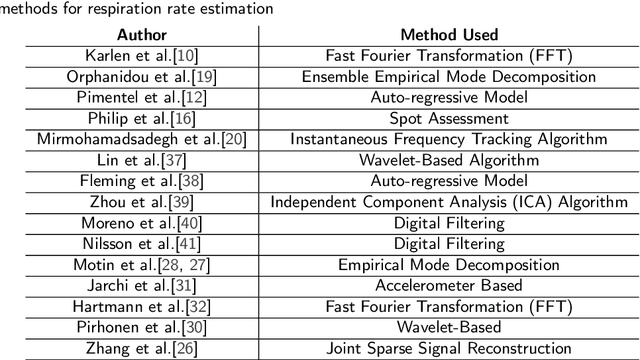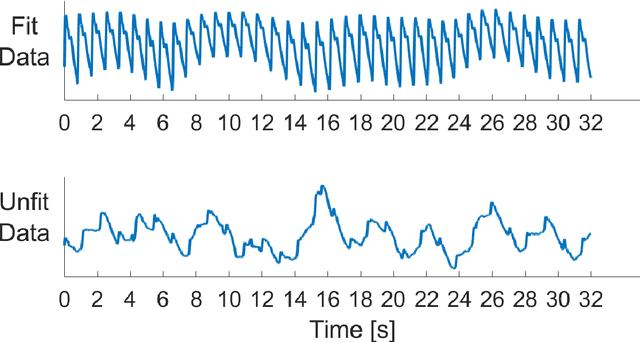Moajjem Hossain Chowdhury
A Novel Non-Invasive Estimation of Respiration Rate from Photoplethysmograph Signal Using Machine Learning Model
Feb 18, 2021



Abstract:Respiratory ailments such as asthma, chronic obstructive pulmonary disease (COPD), pneumonia, and lung cancer are life-threatening. Respiration rate (RR) is a vital indicator of the wellness of a patient. Continuous monitoring of RR can provide early indication and thereby save lives. However, a real-time continuous RR monitoring facility is only available at the intensive care unit (ICU) due to the size and cost of the equipment. Recent researches have proposed Photoplethysmogram (PPG) and/ Electrocardiogram (ECG) signals for RR estimation however, the usage of ECG is limited due to the unavailability of it in wearable devices. Due to the advent of wearable smartwatches with built-in PPG sensors, it is now being considered for continuous monitoring of RR. This paper describes a novel approach to RR estimation using machine learning (ML) models with the PPG signal features. Feature selection algorithms were used to reduce computational complexity and the chance of overfitting. The best ML model and the best feature selection algorithm combination was fine-tuned to optimize its performance using hyperparameter optimization. Gaussian Process Regression (GPR) with fitrgp feature selection algorithm outperformed all other combinations and exhibits a root mean squared error (RMSE), mean absolute error (MAE), and two-standard deviation (2SD) of 2.57, 1.91, and 5.13 breaths per minute, respectively. This ML model based RR estimation can be embedded in wearable devices for real-time continuous monitoring of the patient.
Estimating Blood Pressure from Photoplethysmogram Signal and Demographic Features using Machine Learning Techniques
May 07, 2020Abstract:Hypertension is a potentially unsafe health ailment, which can be indicated directly from the Blood pressure (BP). Hypertension always leads to other health complications. Continuous monitoring of BP is very important; however, cuff-based BP measurements are discrete and uncomfortable to the user. To address this need, a cuff-less, continuous and a non-invasive BP measurement system is proposed using Photoplethysmogram (PPG) signal and demographic features using machine learning (ML) algorithms. PPG signals were acquired from 219 subjects, which undergo pre-processing and feature extraction steps. Time, frequency and time-frequency domain features were extracted from the PPG and their derivative signals. Feature selection techniques were used to reduce the computational complexity and to decrease the chance of over-fitting the ML algorithms. The features were then used to train and evaluate ML algorithms. The best regression models were selected for Systolic BP (SBP) and Diastolic BP (DBP) estimation individually. Gaussian Process Regression (GPR) along with ReliefF feature selection algorithm outperforms other algorithms in estimating SBP and DBP with a root-mean-square error (RMSE) of 6.74 and 3.59 respectively. This ML model can be implemented in hardware systems to continuously monitor BP and avoid any critical health conditions due to sudden changes.
 Add to Chrome
Add to Chrome Add to Firefox
Add to Firefox Add to Edge
Add to Edge